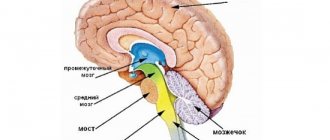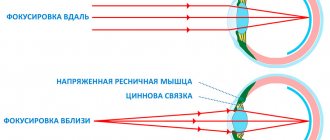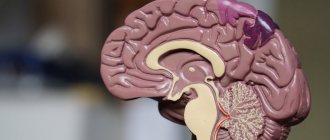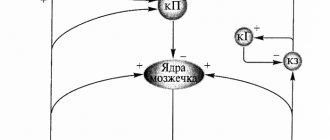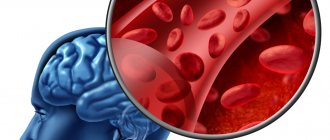The effect of nicotine on brain activity
From a physiological point of view, alkaloids interact with H-cholinergic receptors located in nerve synapses. This activates acetylcholine receptors, which provoke the release of two hormones into the blood: adrenaline and norepinephrine. It is these hormones that cause a feeling of excitement and lift your mood. Concentration comes as a result of the fact that a person stops thinking about satisfying the desire to smoke. But all this passes within a few hours or even minutes and the algorithm is repeated again and again.
The effect of smoking on the blood vessels of the brain
The harmful effects of smoking on the blood vessels of the brain are also known.
Currently, tobacco smoking is the most common cause of vascular pathologies such as stroke and ischemic attack. This occurs due to the fact that as a result of exposure to toxic substances contained in tobacco smoke, the vessels become inelastic, brittle and brittle. That with a sharp increase in blood pressure, there is a risk of developing a hemorrhagic stroke or heavy bleeding due to even a minor head injury.
Nicotine, entering the body’s circulatory system from the lungs, is almost instantly delivered to the brain structures, where it first promotes the dilation of blood vessels and then provokes their spasm, thereby preventing the access of oxygen and nutrients to it.
And since nicotine negatively affects the removal of cholesterol from the body, the smoker increases the risk of developing atherosclerosis, which, combined with a decrease in the lumen of blood vessels as a result of spasm, threatens the development of acute disorders such as ischemia - a detached blood clot can block the flow of blood to the nervous tissue, which will cause it to die.
How nicotine affects the brain and thinking abilities
Cigarette smoke affects all functions of the nervous system. The central nervous system, in particular, brain cells, is most severely affected.
Effect of smoking on the brain
Nicotine acts similar to acetylcholine. Tobacco activates the production of hormones:
- Norepinephrine that sharpens attention
- Uplifting dopamine and serotonin, responsible for the feeling of pleasure,
- The neurotransmitter glutamate is responsible for the exchange of data between the brain and sensory organs.
The emotional uplift after smoking a cigarette occurs due to the release of the hormones serotonin and dopamine into the blood. Vigor and a surge of strength are caused by short-term dilation of blood vessels and rapid subsequent narrowing. A sharp change in the width of the lumen of blood vessels leads to a lack of oxygen, which can be detected by sudden yawning, loss of coordination and headache.
If a teenager or child is a smoker, there is a high probability of abnormalities in the functioning of the central nervous system. The functions of speech, memory and intellectual abilities are most affected.
Impact on brain cells
Every cigarette smoked inevitably causes problems with blood circulation in the brain. They are aggravated by a lack of oxygen. As a result, intelligence deteriorates, and there is a loss of concentration and attention. Problem solving is slowed down by 20-25% compared to non-smokers.
Nicotine also significantly slows down the rate of recovery of neurons and glial cells in the brain. All this contributes to the occurrence and progression of central nervous system diseases. The result can be neuroses, mental disorders and other unpleasant consequences.
Effects on cerebral vessels
The main negative effect of nicotine is manifested in the narrowing of the blood vessels that supply our brain with blood. The duration of the spasm is 10 minutes after smoking a cigarette. Oxygen deficiency leads to the death of brain cells, as a result of which the smoker's intelligence suffers.
Frequent narrowing of blood vessels over a long period of time manifests itself:
- tinnitus,
- frequent headaches,
- decreased visual acuity,
- dizziness,
- decreased concentration,
- memory impairment,
- loss of performance.
In addition, smoking leads to an increase in cholesterol levels and the formation of plaques on the walls of blood vessels. In the future, atherosclerosis may develop.
Lack of oxygen thickens the blood, which can lead to the formation of blood clots. Depending on their location in the human body, they can lead to serious illness and even stroke.
Smoking on tap also has a bad effect on children. Regularly inhaling tobacco smoke, the baby will show irritability and aggression, excessive anxiety, and possibly even developmental delays.
Impact on intelligence
Smokers are divided into two categories: some claim that after a couple of puffs they become more attentive and do better work, others honestly admit that every cigarette leads to a slowdown in brain function. In fact, feeling unwell after smoking is the result of intoxication with nicotine and combustion products. The degree of negative manifestations depends on the general condition of the body and may differ from person to person.
The effects of smoking on mental abilities have been studied in detail by experts. As a result, it was concluded that smokers remember information worse, add numbers more slowly, and show inhibition when solving simple problems.
Scottish scientists assembled a focus group of 465 people aged 64 years. Half of them were smokers, the control group was not. Using tests, the effect of nicotine on mental abilities and memory was assessed. A comparison was made with the test results of the same people at the age of 11 years. The results showed that smokers suffer most from logical thinking and reproduction of previously received information.
Smoking brain
“Smoking is harmful!” any smoker will readily tell us. If this is an obvious fact, why is it so difficult to quit a bad habit? The problem here is not risk awareness. Nicotine not only destroys the body, but also fills us with happiness on a biochemical level. However, the happiness from a cigarette can be replaced with something else, safe and recommended by a doctor. Edition N+1
in collaboration with Pfizer, explores the love and hate of tobacco that is rooted in the human brain.
According to the World Health Organization (WHO), 8 million people die each year from tobacco-related factors.
Smoking and other types of tobacco use not only reduce overall life expectancy and are associated with cancer, heart disease and lung disease, but also take a toll on the economy. The total economic cost of smoking is estimated at 0.22-0.88 percent of each country's GDP. And the global cost of medical services associated with damage from smoking is $422 billion annually. You can learn more about the effectiveness of smoking cessation methods on the website vnezavisimosti.ru.
Share
However, there is some good news. According to the same WHO, global levels of tobacco consumption are declining, and states are increasingly thinking about targeted policies to control the tobacco market. The idea is growing in popularity in all regions of the world that many people who smoke are well aware of their risks and try to quit smoking at least once a year. The problem is that quitting smoking doesn't happen at the snap of a finger. This is long and unpleasant - especially for smokers.
Nicotine, which is contained in tobacco, causes physiological dependence, and the process of tobacco consumption causes psychological dependence. The WHO's annual report calls tobacco addiction a global epidemic. But unlike, for example, the COVID-19 pandemic, smoking is much older. The history of modern tobacco consumption stretches back over 500 years. And throughout this entire time we have to fight not with a virus, or even with a plant of the Solanaceae family, but with the person himself, who turned tobacco not only into a habit, but also into a consumer culture.
Share
500 years of smoking
After Christopher Columbus, having discovered America in 1492, brought tobacco from there to Europe, the Old World accepted it with great hope. For example, at the end of the 16th century, the Spanish doctor Nicolas Monardes included tobacco in the list of medicinal drugs. He was prescribed a wide range of therapeutic effects. But other doctors quickly began to have doubts about the benefits of smoking.
One of the first essays on the dangers of tobacco was published in 1602 in England. The brochure was called “Work for Chimny-Sweepers or A Warning for Tobacconists.” The author (we know only his pseudonym - Filaret) argued that diseases common among chimney sweeps and resulting from inhalation of soot are also often found among tobacco smokers.
In modern times, scientific interest in the effects of tobacco on health has only intensified due to the growing popularity of smoking in Europe and North America. However, the main tobacco control campaigns were conducted to a lesser extent on the basis of scientific research. Often, battles over tobacco reflected business competition and political strife. In Russia, under Tsar Mikhail Romanov, a smoking ban was introduced in 1634 (tobacco was imported from England at that time), also under the pretext of ensuring fire safety and because tobacco smoke blocked the smell of incense in churches. Under Peter I, in 1697, all smoking bans, on the contrary, were lifted: the first Russian emperor considered tobacco a symbol of progress.
Anti-tobacco groups that gained popularity in the 19th century called for thinking about the harmful effects of tobacco on society, as well as the impact of tobacco addiction on families. In the wake of this criticism, at the beginning of the 20th century, laws were passed in Great Britain, America and Australia restricting the sale of tobacco, primarily to children.
Before World War II, criticism of tobacco smoking received an unprecedented scientific basis for that time - from Nazi Germany. Since the regime's ideology was based on the idea of so-called "racial purity", the state introduced a number of smoking bans, and also began to fund research that proved the harm of tobacco to health. Despite the low quality of many works supported by the state, several German scientists, in the wake of interest in the topic, conducted higher quality research that was independent of the “state order”. Among them is “Tobacco Abuse and Lung Cancer” (“Tabakmißbrauch und Lungencarcinom”) from 1940, the work of oncologist Franz Hermann Müller, who studied the factors that influenced the health of his patients. He concluded that the rapid increase in tobacco use in Germany is directly related to the increased incidence of lung cancer.
After World War II, when former soldiers popularized the habit of smoking cigarettes throughout Europe and North America, similar studies began to be conducted around the world. They were followed by research into the psychology and biochemistry of smoking.
Share
Mechanism of addiction: nicotine “trap”
To date, the mechanism of nicotine addiction has been well studied (although the list of biological reactions of the body to nicotine is still being expanded). In general, nicotine acts on nicotinic acetylcholine receptors (n-ACh), which are associated with the release of essential neurotransmitters in the brain. Among them are dopamine (responsible for the feeling of satisfaction and affection), norepinephrine (responsible for accelerating the body’s reactions, but activates them weaker than adrenaline), serotonin (“the hormone of happiness”), as well as GABA B-endorphins (regulate inhibitory processes in the brain) .
Nicotine replaces acetylcholine in the body - an internal, “natural” activator of the mentioned brain processes. Moreover, nicotine accelerates the synthesis of acetylcholine receptors. This is the basis of physiological dependence. A smoker's body quickly loses the ability to produce enough acetylcholine to trigger important brain processes, such as feelings of satisfaction. Only nicotine can compensate for the lack of acetylcholine in a smoker.
The problem is made worse by the fact that nicotine acts very quickly. It is instantly absorbed into the blood, reaches the brain in a matter of seconds and at the biochemical level makes the smoker feel happy. After a few seconds, the sensations reach a peak and immediately disappear, causing the desire to take another puff, preferably quickly.
Regular smoking disrupts the normal regulation of the brain's "reward system" and also affects cognitive functions: nicotine speeds them up, but without nicotine they are suppressed. Although nicotine improves the ability to retain more information in memory, long-term smoking increases the risk of Alzheimer's disease and threatens cognitive decline.
Psychological dependence on nicotine is secured by ritual: a regular set of sensations (the appearance of a pack and cigarette, the smell of smoke, pleasant chat with colleagues during a smoke break, etc.), which are much more difficult for heavy smokers to give up than for those who smoke irregularly.
As with any narcotic drug, withdrawal from nicotine is accompanied by withdrawal symptoms. The main effects include the following:
- craving for smoking;
- irritation/aggression;
- anxiety;
- feeling tired;
- increased appetite;
- loss of concentration;
- depression;
- headache;
- sleep disorders;
- dizziness.
Share
Treatment of addiction: what will help the brain?
There are two main methods that, at a physiological level, help overcome withdrawal symptoms and facilitate the process of quitting smoking. These are nicotine replacement therapy (NRT) and nicotine-free products. Both methods help those who decide to quit smoking. But their effects differ.
NRT includes any means that continue to supply nicotine into the smoker’s blood, but in smaller quantities, until the smoker, gradually reducing the dose, can do without nicotine altogether. Thus, NRT includes nicotine patches, nicotine-containing gum, inhalers or sprays. According to recent studies, NRT drugs increase the chances of successfully quitting smoking by 50-70 percent. Electronic cigarettes are also sometimes included in the NRT group. Manufacturers call them a gentler means of delivering nicotine than regular cigarettes, since e-cigarettes do not contain carcinogenic tar. However, recent studies have shown that the exhaust from electronic cigarettes and even vapes, which do not contain nicotine but contain artificial flavors, can be harmful to health. And e-cigarette users reported feeling worse. This fact brings the so-called “heated tobacco products” closer to snus or snuff, which doctors also previously recommended as NRT, but the carcinogenic properties of the tars of these types of tobacco outweighed the therapeutic effect.
In addition, a 2015 study of smoking cessation programs in Danish clinics concluded that NRT did not provide the additional motivational effect that nicotine-free products did. According to the study, the use of nicotine-free products prescribed by the doctor during the appointment, in combination with regular consultations with a specialist, doubled the chance that a smoker would successfully quit the habit (the study authors considered a minimum of 6 months of abstinence from smoking to be a successful quit). However, consultations with a doctor in combination with nicotine replacement therapy did not produce the same positive effect.
The mechanism of action of nicotine-free products is fundamentally different from NRT. These drugs, in fact, replace nicotine particles, while copying its biochemical properties (more precisely, the properties of acetylcholine, which in the smoker’s body suffers a crushing defeat from nicotine).
One of the options for modern therapy for nicotine addiction without nicotine was created as an agonist of n-ACL α4β2 receptors, on which the release of dopamine depends. Simply put, this method activates the “happiness hormone” instead of nicotine, but is 40-60 percent milder. This allows the smoker to avoid withdrawal symptoms.
At the same time, the drug does not cause addiction. The brain continues to produce the same hormones as when smoking, not suspecting that these processes are no longer triggered by nicotine.
At the same time, a similar drug interacts with nicotine particles, and in the opposite way - as an antagonist (that is, as a chemical compound that blocks the action of the receptor). Since with this type of therapy the active substance “binds” better to α4β2 receptors and takes the place of nicotine, it does not allow nicotine itself to gain access to the receptors and increase the production of dopamine in the brain. Therefore, if a person nevertheless decides to smoke after taking such a drug, he will not enjoy the process: this mechanism will be blocked at the biochemical level.
You can learn more about ways to quit smoking, as well as the effectiveness of modern drugs and techniques, on the website vnezavisimosti.ru.
Share
Smoking: the view of the medical community
- Tobacco addiction is a disease that requires treatment.
- Conducting explanatory conversations with smoking patients is one of the most important tasks for doctors and medical staff.
- Effective treatments for tobacco addiction exist. They significantly increase periods of smoking cessation.
- Individual, group consultations, as well as telephone or online consultations help get rid of addiction and consolidate the result.
- Drugs to overcome tobacco addiction work. Doctors should recommend them to any patients - unless they have contraindications.
- The combination of several drugs (nicotine replacement and/or nicotine-free) increases the chances of quitting smoking.
Compiled based on recommendations from the US Department of Health
Share
Share
Some antidepressants are also used as a nicotine-free drug that can make it easier to quit smoking. Many popular antidepressants work as serotonin reuptake inhibitors, but there is another type of antidepressant that normalizes the transmission of neural signals based not on serotonin, but on dopamine and norepinephrine. Nicotine also primarily affects the production of dopamine and norepinephrine - as a result, this type of antidepressant can alleviate the suffering of smokers who decide to quit.
However, antidepressants have side effects ranging from nausea and tremors of the limbs to the provocation of suicidal thoughts.
If the idea of using drugs to normalize brain processes frightens a smoker, there is always the option of trying self-hypnosis. For example, popular books by Allen Carr and other authors that offer several psychological guidelines that make the process of quitting smoking easier. Despite the skepticism with which the medical community accepts recommendations of this kind, recent surveys confirm the effectiveness of self-hypnosis mechanisms.
More precisely, according to a recent study, seminars using the Carr method are not inferior in effectiveness to nicotine replacement therapy. This is also good news. At least for those smokers who are confident that their brain is able to break the biochemical “trap” of nicotine and recover on its own.
Egor Avdeev
"Pros" and cons of the effect of nicotine on brain activity
Often a person continues to smoke because he is sincerely convinced of the benefits of tobacco for the body, in its healing and relaxing effect on the psyche. The most common misconceptions among smokers are:
- Smoking helps keep weight under control by reducing appetite,
- Nicotine has a calming effect on the body and copes better with stress than drugs,
- A cigarette allows you to concentrate,
- Smoking makes it easier to overcome anticipation and successfully cope with boredom.
Only a small proportion of smokers note an almost immediate return of negative emotions almost immediately after finishing a smoke break. Not remembering the normal state of the body, addicts look for the causes of nicotine-induced drowsiness and constant fatigue. Few people think that a temporary increase in concentration and attention ends in increased blood pressure and increased heart rate.
Meanwhile, there are many more negative sides and they are all real. It has been proven that smoking:
- Impairs memory and intelligence
- Leads to a lack of oxygen, slowing down thought processes,
- Violates the psychological and emotional state of a person,
- Causes irritability and inexplicable anger,
- Forms addiction
- Keeps the body in constant tension, aggravates stress,
- Negatively affects the health of others (especially children),
- Increases the risk of serious illness.
What happens with atherosclerosis?
If the walls of the cerebral arteries become blocked, the smoker may experience transient cerebral ischemia. The risk of hemorrhagic stroke, caused by loss of elasticity of the blood vessels in the brain, also increases. The walls of blood vessels become brittle, so when blood pressure rises they can rupture.
Smoking can cause damage to the nervous system. Patients with multiple sclerosis who have smoked for six months or more are more likely to have destruction of the white matter of the spinal cord and brain than patients who have never touched a cigarette.
Smoking and cerebral blood vessels are incompatible concepts if a person wants to maintain physical and mental health into old age. The effects of nicotine on the body are irreversible, but quitting smoking will help reduce the chance of developing atherosclerosis, stroke and cerebral ischemia.
How to help your brain recover after quitting smoking?
The first and most important thing is to completely stop using cigarettes. After three days, the body will be completely cleansed of nicotine. Blood vessels will begin to function normally in 3-4 weeks.
To speed up the body’s recovery process, it is recommended to spend more time in the fresh air, perform feasible physical exercises, and diversify your diet with fruits, vegetables and herbs. Brain activity improves with regular training: solving crosswords and puzzles, reading daily.
Stopping the intake of new doses of nicotine significantly improves well-being, the blood is enriched with oxygen, and the brain begins to work more actively and productively.
We are happy to help every patient overcome cigarette addiction and regain health. By giving up a bad habit, a smoker prevents personality degradation and the destruction of intelligence.
How to restore your brain after smoking
The basis of the recovery process is to quit a bad habit. Smoking gradually kills the body; its harmful effects on the brain are too large-scale to be successfully compensated for by one or another method and make smoking harmless. You should consult a neurologist, who, after conducting all the necessary examinations, including hardware examinations, for example, MRI, will make a conclusion about the state of the brain and peripheral nervous system.
What happens after quitting smoking - stages of cleansing and restoring the body hourly and day by day!
The elasticity of blood vessels is restored on its own, and quite quickly - in just three weeks. After this period of time, a sufficient amount of blood begins to flow into the brain to fully supply it with oxygen, and therefore to function. The cells of the brain itself gradually return to normal. But atherosclerotic lesions will have to be dealt with separately with the help of a neurologist, lowering the level of cholesterol in the blood with the help of special drug therapy. The renewal of the nervous impulse system occurs within a month, during which time irritability and nicotine withdrawal will go away.
Mechanisms of addictive behavior
Nicotine begins to act on neurons within 7 seconds after the first inhalation of tobacco smoke. It affects the brain in its various parts, since it is an analogue of the natural transmitter of nerve impulses - acetylcholine (ACh). Nicotine activates ACh receptors instead of acetylcholine and competes for binding sites with them, since it has a longer interaction with ACh receptors than their natural activator. This leads to the appearance of new ACh receptors, which then also interact with nicotine.
Stimulation of ACh receptors in the brain activates the release of neurotransmitters such as glutamate, dopamine, serotonin, β-endorphin, norepinephrine, γ-aminobutyric acid, etc. The influence of the main mediators on the human brain and its emotional state during smoking is presented in the table:
| Mediator | Effect |
| Glutamate | Involved in memory mechanisms and the formation of a memorable trace. |
| Dopamine | Provides a feeling of pleasure, but the supply of dopamine may be depleted when smoking. This leads to a feeling of fatigue and depression. |
| Serotonin | Improves mood and creates emotional stability. |
| β-endorphin | May create a feeling of euphoria. Has an analgesic effect. |
| Norepinephrine | Stimulates the body, sharpens attention, increases concentration. |
| γ-aminobutyric acid | Has a relaxing effect. |
Nicotine supplied by smoking cigarettes, through the release of serotonin and β-endorphin, creates an emotional high, which is accompanied by general stimulation due to the release of norepinephrine. The effect of nicotine is remembered due to the activation of glutamate, which leads to the consolidation of these sensations in memory. All this encourages a person to smoke again and again and prevents him from quitting this harmful habit. Dopamine makes quitting smoking more difficult by stimulating pleasure centers.
It should be noted that the mental and physiological effects after smoking cigarettes may vary. This is due to the existence of multiple subtypes of nicotine-dependent ACh receptors that are differently sensitive to nicotine. And these receptors are distributed differently in the brain in different people. Therefore, nicotine affects different people differently.
However, with frequent or prolonged smoking of cigarettes, the neurotransmitter supply of each smoker is depleted, disturbances in the transmission of nerve impulses occur, resulting in changes in the character, behavior and intellectual abilities of a person.
Thus, the positive effect of cigarette smoking on the emotional state and ability to concentrate is rather a subjective illusion. In fact, smoking cigarettes causes addiction, which is no different from drugs, because when the number of neurotransmitters is depleted, there is a need to increase the number of cigarettes per day. And this leads to an absolutely negative effect on the brain and poses a threat to overall health. In order for brain activity to improve, smoking cessation is necessary. And although quitting smoking cigarettes is not easy, training willpower greatly helps in this. A quitter notes that over time, his health begins to improve, and this is followed by emotional stability and an increase in cognitive abilities.
The brain is the main organ in the human body. It is unique, capable of processing and accumulating a large amount of information. The health of the body as a whole depends on its activity. Smoking is one of the most dangerous negative factors that can cause a number of serious diseases. Scientists are still conducting research and identifying new facts that reflect how smoking affects the human brain. Many people are pessimistic about doctors' warnings and put themselves in serious danger.
